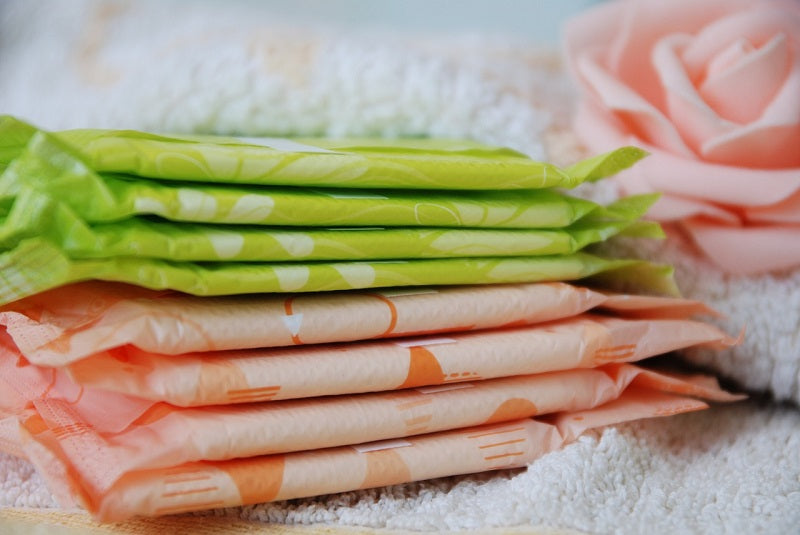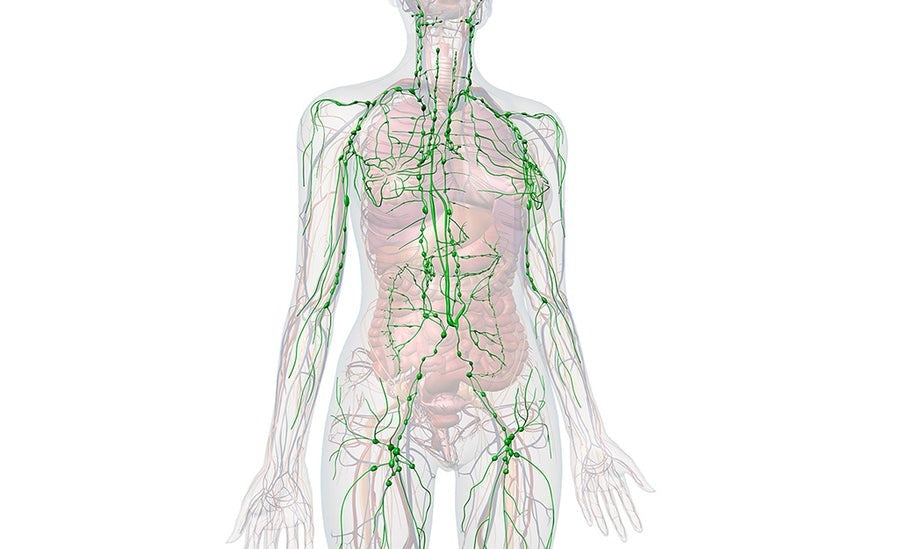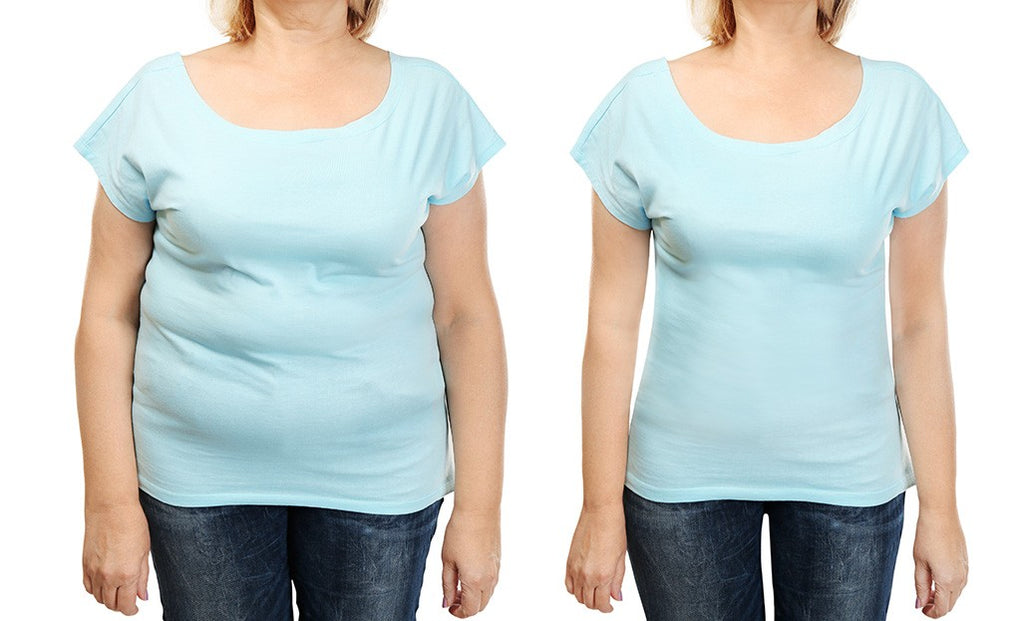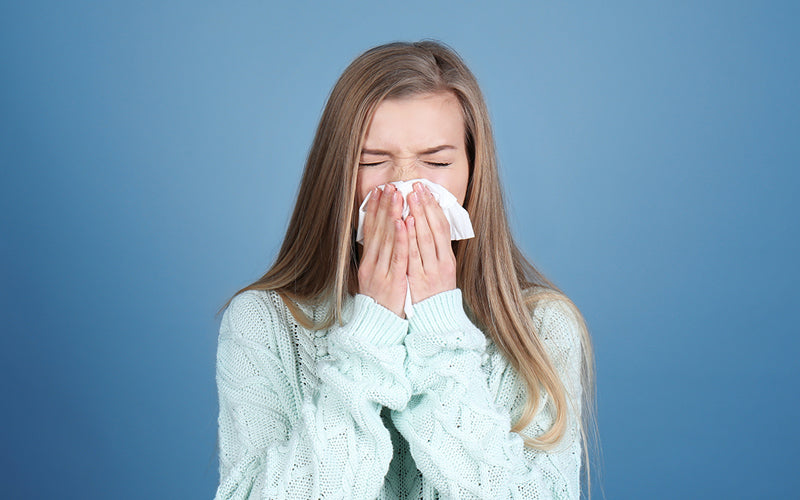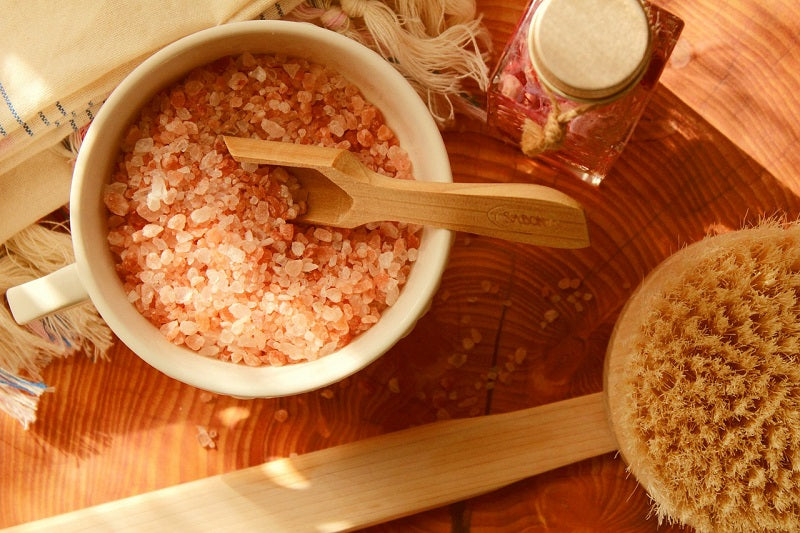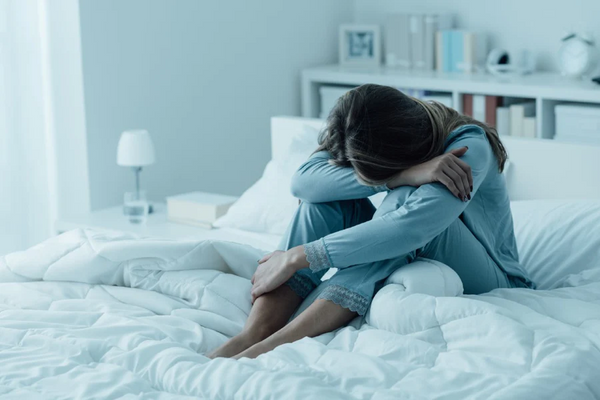Menorrhagia: How to Minimize Heavy Periods
Menorrhagia (heavy bleeding) occurs when there is menstrual blood loss in excess of 80ml or when the menstrual bleed continues for longer than 7 days.
How can you tell how much blood you are losing?
You can use any of these as baseline figures in assessing total blood loss during your period:
- One soaked regular pad or tampon holds 5 mL.
- A super tampon holds 10 mL.
- A menstrual cup can hold up to 3x the amount of a super tampon. (For example, a small menstrual cup holds typically 25mL and a regular menstrual cup holds 30mL.)

Signs of heavy bleeding will equate to 2-3 completely filled menstrual cups, 16 fully soaked regular tampons, or 8 fully soaked super-tampons over all the days of the period.
(Note: Extreme heavy bleeding will far exceed 80mL and medical attention may be necessary.)
The issue of heavy bleeding is closely related to the hypothalamic-pituitary-adrenal (HPA) axis, the ovaries, an imbalance in prostaglandin levels, excessive stimulation of the endometrium by oestrogen (oestrogen excess) or low progesterone production. Oestrogen thickens the uterine lining while progesterone breaks down and reduces the uterine lining.
Ovulation is the key to healthy hormonal balance.
To make progesterone, you need to ovulate. To ovulate every month, you need to be free from chronic stress, inflammation, thyroid disease, and insulin resistance. The combination of any of these will cause a heavy bleed to occur due to excess inflammation and a thickened endometrial lining. You must also be properly nourished – no nutrient deficiencies and enough carbohydrates in your diet.
Who is more susceptible to heavy periods?
Heavy periods can occur at any age, but they are most commonly seen in young teenagers and perimenopausal women due to a similarity in too much oestrogen and not enough progesterone.
When young girls begin to menstruate, they usually present more with an oestrogen excess as their bodies are still finding balance. Oestrogen receptors are naturally more sensitive in the first few years of cycling because this is a new bodily function. Cycles are often still anovulatory (without ovulation), resulting in no progesterone being made to lighten the menstrual flow. This sensitivity of our oestrogen receptors should settle down over the years and as girls start to ovulate, periods will lighten.
Heavy periods during perimenopausal years are much more severe than the temporary heavy periods during teenage years. Treatment is necessary to ensure the flow does not continually get heavier as menopause approaches.
Possible factors contributing to menorrhagia
- Suboptimal levels of progesterone
- Oestrogen excess or unopposed oestrogen
- Hypothyroidism
- Iron deficiency
- Clotting abnormalities
- Reproductive cancers
- High levels of prostaglandins
- Lifestyle factors such as obesity, high dietary fat intake, stress, and lack of exercise
- Underlying reproductive disorders such as endometriosis, endometritis, adenomyosis, luteal phase defect, pelvic inflammatory disease, or polyps
- High insulin levels
- Nutritional deficiencies (more specifically referring to vitamin K)
- Synthetic hormone therapy
- Contraception and intrauterine devices
- Menarche and menopause (erratic ovulation during these life stages results in low progesterone and an unstable endometrium)
From a naturopathic perspective, firstly identifying the root cause or causes of the issue is imperative for REAL results and long-term health outcomes. It is also important to rule out thyroid issues.
Masking symptoms with medications is simply delaying the issue for a later date. When is the best time to act? NOW!
Naturopathic tips to reduce heavy menstrual flow
-
Address hormonal imbalances directly from the master control centres. These are the hypothalamic-pituitary-adrenal (HPA) axis and the hypothalamic-pituitary-ovarian (HPO) axis. The best approach is using specific herbal medicines such as those found in Happy Hormones. For example, Vitex agnus-castus helps improve progesterone by increasing luteinizing hormone and inhibiting the release of FSH if imbalanced.
-
Improve oestrogen clearance and address liver congestion. Oestrogen must be detoxified via the liver and bowels. Oestrogen becomes inactivated through the liver metabolic processes and should stay inactivated while being processed in the intestine to eventually be excreted through stool. The liver needs B-vitamins, selenium, and glycine to smoothly make this happen.
-
To support the processes of oestrogen clearance, avoid alcohol, sugar and antibiotics. All these affect the efficiency of the liver and can damage the intricate balance of the gut microbiome. The herbal medicine Rosmarinus officinalis (rosemary) induces the protective pathway of oestrogen CYP1A1 and inhibits the negative pathway CYP3A4. DIM, found in our Happy Greens, may also assist with liver detoxification as well as the elimination of “bad oestrogen” metabolites. Calcium-D-glucarate can improve oestrogen metabolism and clearance through the liver and gut to assist in making periods lighter.

-
Decrease and/or eliminate dairy from the diet. There is a specific form of dairy – A1 casein – that can form the inflammatory opiate casomorphin or BCM7. BCM7 stimulates inflammatory cytokines and mast cells. The uterine lining is packed with mast cells. Histamine is released by the uterine mast cells, after which there is a release of heparin that can affect menstrual flow and causes heavy periods.
-
Rebuild and replenish iron stores. Heavy menstrual bleeding significantly depletes your body of iron. In turn, low iron can cause and exacerbate heavy periods. By rectifying iron levels, you can increase blood viscosity and lighten your menstrual flow. It is just as imperative to address iron deficiency alongside hormonal imbalance.
-
Eat well and eat ENOUGH. Healthy ovulation is essential in creating a healthy hormonal balance. Nourishing yourself with good food – and enough of it – is crucial in promoting healthy ovulation. This means eating enough protein, healthy fats, and carbohydrates. Avoid saturated fats and eliminate processed foods and refined sugars as they’re pro-inflammatory. The FREE Happy Hormones 8-week program is the perfect place to start your nutritional journey towards hormone health.

-
Essential fatty acids possess anti-inflammatory properties and are needed for hormone synthesis. They can be found in nuts, seeds and cold-water fish. Fish oil is exceptionally good as it contains omega 3 essential fatty acids and docosahexaenoic acid (DHA), in particular. DHA acts on the inflammatory pathways of leukotrienes and prostaglandins.
-
Reduce prostaglandin levels to further lessen inflammation and excessive bleeding. Prostaglandins are chemicals produced around menstruation to help the uterus contract and expel period blood. Both zinc and magnesium can inhibit the amount of prostaglandins released. Zinc is also an essential nutrient for ovulation. Ginger (Zingiber Officinalis) not only inhibits leukotriene formation (inflammation) but also suppresses prostaglandin synthesis.
-
Reduce the amount of arachidonic acid released during menses. The endometrium’s control of arachidonic acid supply for prostaglandin synthesis is altered with menorrhagia. Higher levels of arachidonic acid released during menses result in higher production of prostaglandins (series 2), which are hypothesised to be a key component in excessive bleeding at menstruation. Turmeric (add turmeric link, either the article of HT) has the ability to inhibit arachidonic acid production, reduce prostaglandin levels and diminish inflammation by inhibiting IL-6 and IL-8 inflammatory pathways.
-
Improve gut health. Poor gut microbiome is usually a perfect recipe for oestrogen excess. So something as simple as increasing our fibre intake can assist in excreting excess hormones from the body with regular bowel movements! The microbiome of the GIT is also paramount in hormonal health as certain ‘bad’ bacteria have the ability to produce an enzyme that can reactivate the oestrogen in our gut after it has been metabolised in the liver. Reactivated oestrogen can then be reabsorbed into the bloodstream.
-
Decrease bleeding through herbal medicine supplementation. Beth Root, Shepherd's Purse, Black Cohosh, Rehmannia, Dong Quai, Paeonia and Horsetail are just a few of nature’s herbal remedies that have helped women through time. The TCM herb Tienchi Ginseng is especially recommended for heavy bleeding due to its anti-haemorrhagic effects.
-
Reduce your exposure to endocrine-disrupting chemicals (EDCs). EDCs mimic or partly mimic naturally occurring hormones in the body like oestrogens (the female sex hormone), androgens (the male sex hormone), and thyroid hormones, potentially causing overstimulation. For tips on how to reduce your exposure to EDCs, check out this article.
-
Eat phytoestrogens. Phytoestrogens act as selective oestrogen receptor modulators. This means they attach onto oestrogen receptors and either create a block when oestrogen is in excess or trigger oestrogen action when there’s a deficit. Oestrogen stimulates the growth of the uterus lining. By incorporating phytoestrogen foods, there will be competition with stronger endogenous estrogens. This can reduce the overstimulation of the uterine lining, resulting in lighter periods. Foods containing phytoestrogens include nuts, soy, and flaxseeds. Keep in mind though that unfermented soy can be problematic for some women. Choose fermented forms such as tempeh and miso.
-
Ensure your iodine levels are up to scratch. The ovaries naturally contain some of the highest levels of iodine in the body. Adequate iodine levels are essential for healthy ovulation, reducing ovulation pain, preventing ovarian cysts, and boosting progesterone. Iodine decreases oestrogen sensitivity by down-regulating oestrogen receptors and improving detoxification of oestrogen, thereby reducing causative factors of heavy periods.
- Uncover the source! A holistic treatment approach is the best way to support the body and nurse it back to optimal health. It is, however, quite crucial to narrow down the causative factors and address them for a more profound level of healing. Here are a few examples:
- improve gut integrity in cases of leaky gut
- enhance reabsorption of oestrogen
- optimise thyroid health to improve hormone balance
- reduce insulin levels (excess insulin can negatively thicken the lining of the uterus)
- lessen body fat (body fat creates oestrone and stores it in the body)
Months of commitment is needed to truly get down to the source of hormonal imbalances. However, I can assure you that it’s always a rewarding journey you’ll never regret.
Healing a period is not a quick fix.
If you want a healthy period, you have to work towards ovulating each cycle. To ovulate every month, we need healthy follicles. It takes 100 days for a follicle to fully mature from their dormant state to ovulation. This means you need to commit to nourishing your body for a minimum of three months for your follicles to be in good health so you can ovulate and create a healthy corpus luteum.
If you are experiencing period issues now, this can be a reflection of your health months prior. Happy Healthy You is here to support you through the whole process of addressing menorrhagia. Join our free online Facebook communities and get in touch with our Naturopathic team to start working towards healthy hormonal balance.
REFERENCES
Teimoori, B., Ghasemi, M., Hoseini, Z. S., & Razavi, M. (2016). The Efficacy of Zinc Administration in the Treatment of Primary Dysmenorrhea. Oman medical journal, 31(2), 107–111.
https://www.ncbi.nlm.nih.gov/pmc/articles/PMC4861396/
Cassidy, A., Bingham, S., & Setchell, K. D. (1994). Biological effects of a diet of soy protein rich in isoflavones on the menstrual cycle of premenopausal women. The American journal of clinical nutrition, 60(3), 333–340.
https://pubmed.ncbi.nlm.nih.gov/8074062/
Parida, S., & Sharma, D. (2019). The Microbiome-Estrogen Connection and Breast Cancer Risk. Cells, 8(12), 1642.
https://www.ncbi.nlm.nih.gov/pmc/articles/PMC6952974/
Stoddard, F. R., 2nd, Brooks, A. D., Eskin, B. A., & Johannes, G. J. (2008). Iodine alters gene expression in the MCF7 breast cancer cell line: evidence for an anti-estrogen effect of iodine. International journal of medical sciences, 5(4), 189–196.
https://www.ncbi.nlm.nih.gov/pmc/articles/PMC2452979/
Diamanti-Kandarakis et al. (2009). Endocrine-disrupting chemicals: an Endocrine Society scientific statement. Endocrine reviews, 30(4), 293–342.
https://www.ncbi.nlm.nih.gov/pmc/articles/PMC2726844/
Nozaki et al. (2011). Zinc alleviates pain through high-affinity binding to the NMDA receptor NR2A subunit. Nature neuroscience, 14(8), 1017–1022.
https://pubmed.ncbi.nlm.nih.gov/21725314/
Livdans-Forret, A. B., Harvey, P. J., & Larkin-Thier, S. M. (2007). Menorrhagia: a synopsis of management focusing on herbal and nutritional supplements, and chiropractic. The Journal of the Canadian Chiropractic Association, 51(4), 235–246.
https://www.ncbi.nlm.nih.gov/pmc/articles/PMC2077876/
Hong et al. (2004). Modulation of arachidonic acid metabolism by curcumin and related beta-diketone derivatives: effects on cytosolic phospholipase A(2), cyclooxygenases and 5-lipoxygenase. Carcinogenesis, 25(9), 1671–1679.
https://pubmed.ncbi.nlm.nih.gov/15073046/
Thomson, C. A., Ho, E., & Strom, M. B. (2016). Chemopreventive properties of 3,3'-diindolylmethane in breast cancer: evidence from experimental and human studies. Nutrition reviews, 74(7), 432–443.
https://www.ncbi.nlm.nih.gov/pmc/articles/PMC5059820/
